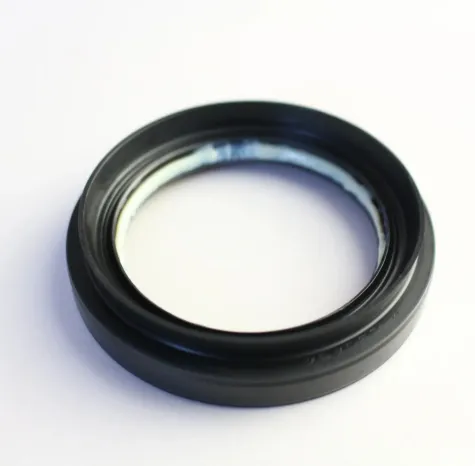Protecting Your Engine: A Complete Guide to the Rear Crank Seal
When it comes to engine longevity, oil containment is non-negotiable. One of the most critical—and often overlooked—components in preventing oil leaks is the rear crank seal. This small part performs a big job: sealing the rear of the crankshaft to prevent oil from escaping where the crankshaft connects to the transmission. In this article, we’ll explore the function and importance of the rear crankshaft, rear engine oil seal, and rear crankshaft main bearing seal, along with best practices for maintenance and replacement.

What Is the Rear Crank Seal and What Does It Do?
The rear crank seal also known as the rear main seal, is located at the back end of the engine where the rear crankshaft exits the engine block and connects to the transmission or flywheel. Its primary function is to keep engine oil from leaking out while allowing the crankshaft to spin freely at high speeds.
Typically made of high-temperature rubber, PTFE, or a composite material, the rear crank seal must handle extreme heat, pressure, and constant motion. Unlike front seals, accessing the rear crank seal usually requires removal of the transmission, which is why it's often replaced during clutch changes or major engine service.
Common Symptoms of a Failing Rear Crank Seal:
Oil leaks from the bellhousing or flywheel area
Unexplained oil loss over time
Clutch slippage (in manual vehicles) due to oil contamination
Visible oil stains beneath the rear of the engine
Due to its critical location and the work required to replace it, a leaking rear crank seal should never be ignored.
The Role of the Rear Crankshaft in Engine Operation
The rear crankshaft is the section of the crankshaft that connects to the flywheel and transmits power to the drivetrain. It supports rotational forces and absorbs combustion energy from the pistons. Any leakage around this area compromises both oil integrity and engine balance.
Because the rear crankshaft is integral to engine operation, it’s supported by the rear crankshaft main bearing seal, which not only holds oil in but also keeps contaminants out. The crankshaft must rotate smoothly inside this bearing, and any contamination due to a failed seal can accelerate wear.
Factors That Can Damage the Rear Crankshaft Seal:
Excessive crankcase pressure (often due to PCV valve issues)
Worn crankshaft surfaces or scoring
Poor-quality replacement seals
Incorrect installation or alignment
To prevent further damage to the rear crankshaft and engine internals, seal failures must be addressed early, and proper crankcase ventilation should always be maintained.
How the Rear Crankshaft Main Bearing Seal and Rear Engine Oil Seal Work Together
The rear crankshaft main bearing seal and the rear engine oil seal are sometimes used interchangeably, though technically they refer to slightly different areas of sealing.
The rear crankshaft main bearing seal is the actual oil seal that sits around the main bearing journal at the rear of the crankshaft.
The rear engine oil seal can refer more broadly to the sealing system used at the rear of the engine, including the rear main cap, seal retainer, and sometimes the oil pan gasket in that region.
These components together form a complete oil barrier. If even one fails, oil can leak past the rear crankshaft and onto the clutch, flywheel, or flexplate.
Maintenance Tips for Long-Lasting Rear Seals:
Use OEM or high-quality aftermarket seals made of durable materials like Viton or PTFE
Check the crankshaft surface for wear or grooves—install a sleeve if needed
Replace the seal during any major transmission or engine work for cost efficiency
Ensure proper installation with the correct tools and alignment techniques
Replacing the rear engine oil seal can be labor-intensive but is a smart investment during related services like clutch replacement or transmission rebuilds.
Don’t Overlook the Power of the Rear Crank Seal
Though hidden deep inside your engine assembly, the rear crank seal, rear crankshaft, rear crankshaft main bearing seal, and rear engine oil seal are essential to maintaining oil containment, protecting your crankshaft bearings, and ensuring engine performance.
Ignoring leaks in this area can lead to serious issues—from loss of oil pressure to clutch damage and even catastrophic engine failure. By understanding the importance of these components and staying proactive with inspections and replacements, you protect both your engine and your wallet.
-
Seal 12x20x5: Precision Radial Shaft Seals for Industrial Reliability
Nûçe Nov.24,2025
-
Seal 12x18x5: Essential Guide to Specifications, Applications & Vendors
Nûçe Nov.24,2025
-
Understanding Seal 12 20 5: Applications, Specifications & Industry Insights
Nûçe Nov.23,2025
-
Durable Oil Seal 85x110x12 – Reliable Sealing Solutions for Industry
Nûçe Nov.23,2025
-
Durable and Precise Oil Seal 75x95x10 for Efficient Machinery | YJM Seal
Nûçe Nov.22,2025
-
Durable Oil Seal 75x100x10 for Reliable Industrial Performance | YJM Seal
Nûçe Nov.22,2025
-
High-Quality Oil Seal 65x90x10 | Durable & Reliable Sealing Solutions
Nûçe Nov.22,2025
Kategoriyên hilberan















